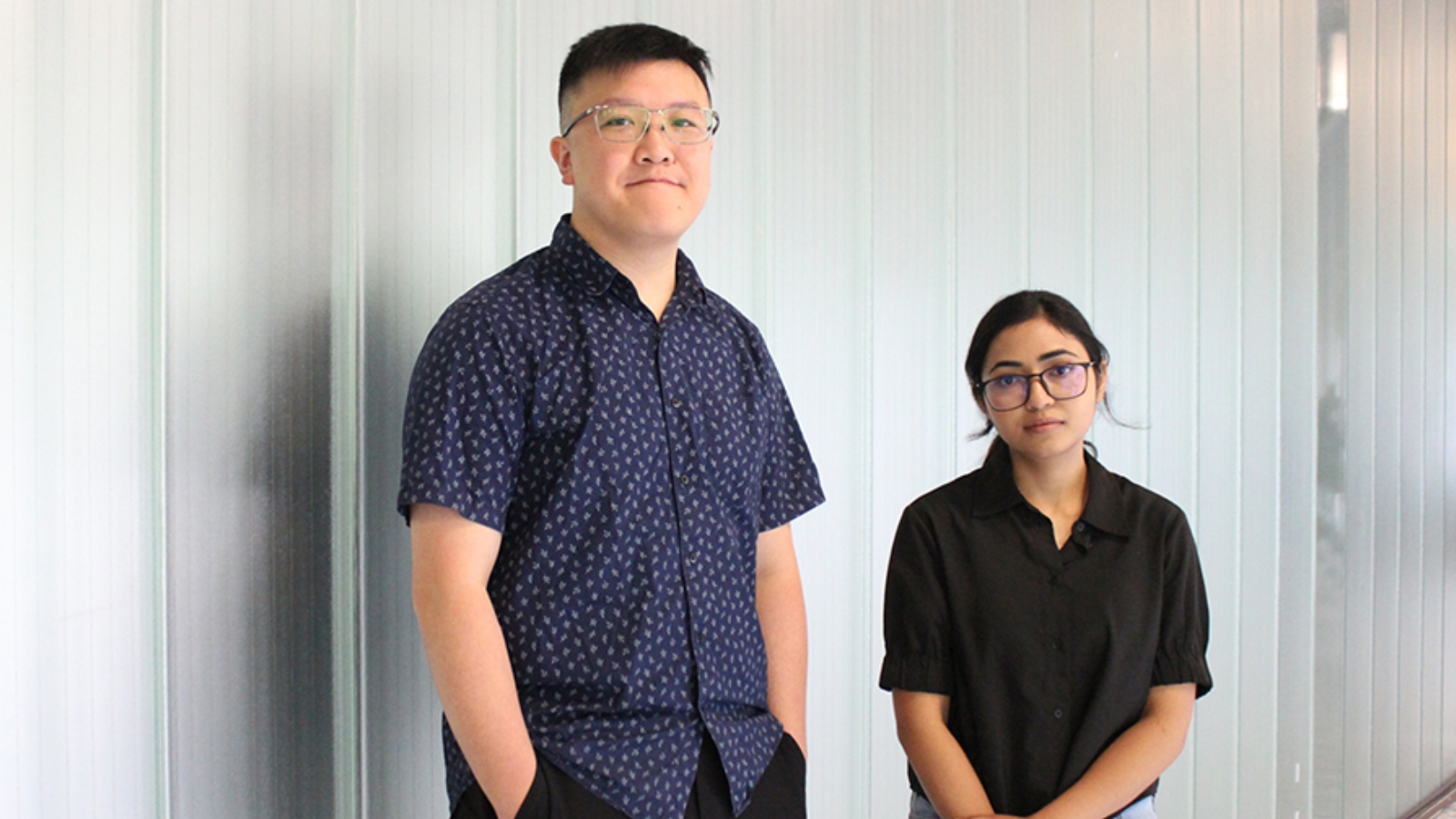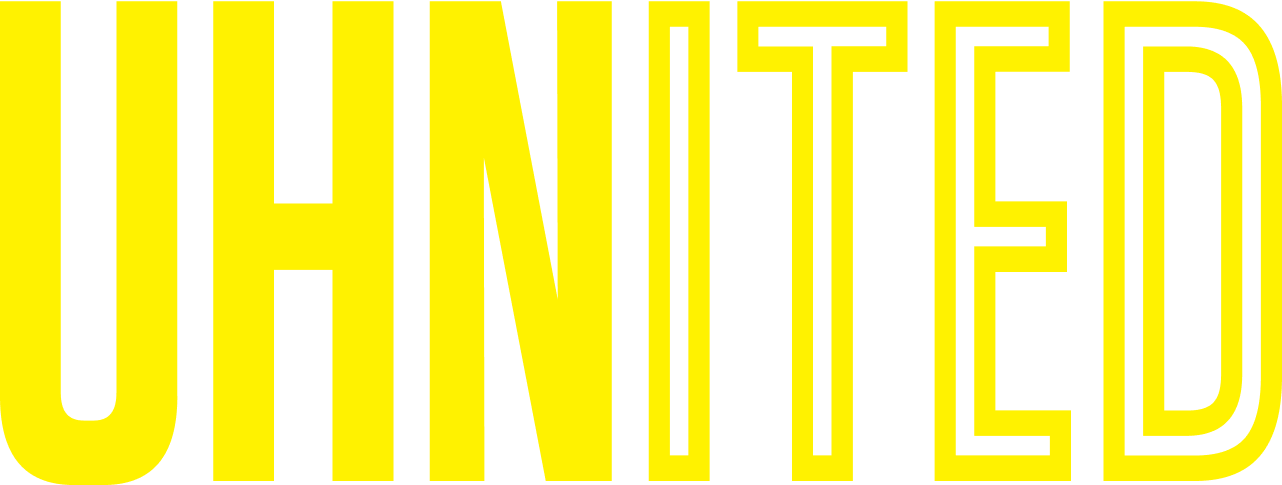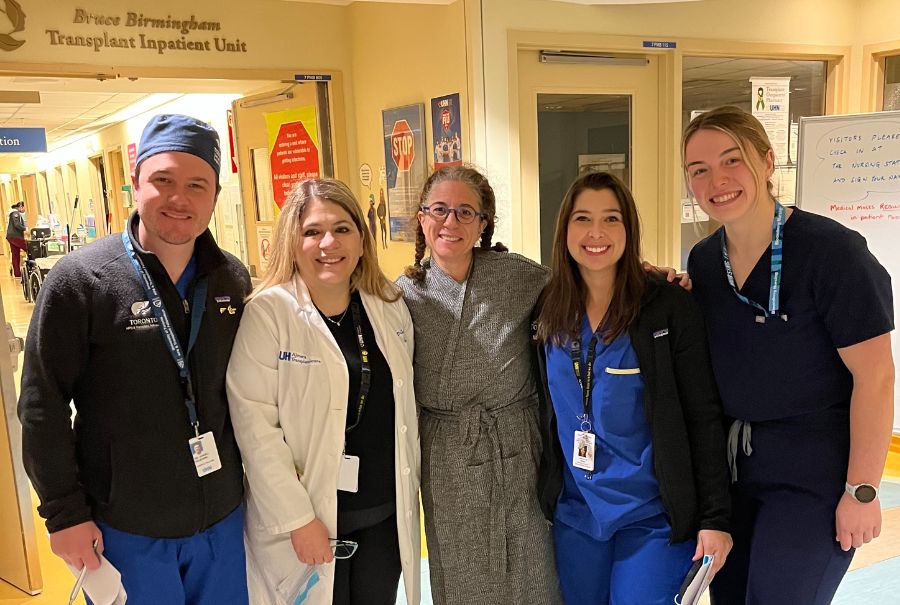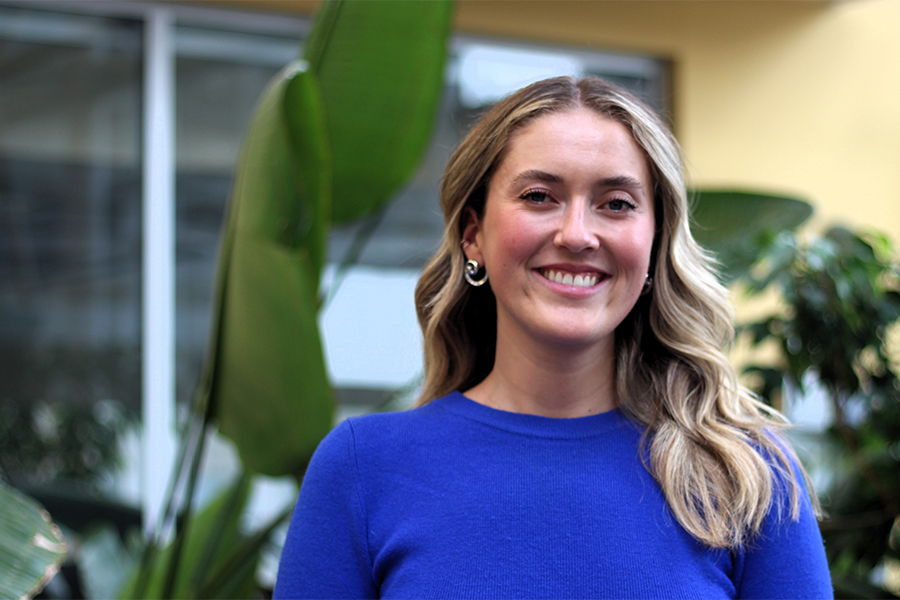
Two University of Toronto students are teaming with UHN’s Department of Quality, Safety and Clinical Adoption to create artificial intelligence (AI) models that can improve patient safety and quality of care.
The work is part of a collaboration between UHN Data and Analytics and the Centre for Healthcare Engineering at the University of Toronto, which aims to give students the opportunity to work with real-world data while supporting a health care project.
Here’s how it works: each year, selected students partner with different departments across UHN, analyze diverse sets of data and co-identify an area for improvement. Students then work to develop a solution using a variety of innovative technologies, including predictive modelling, automation and simulation.
“The Data and Analytics Student Program connects academia, research, data and technology,” says Ashley Tattersall, Manager of the program. “This creates opportunities for learning and discovery that enable UHN to better understand operational processes, improve patient outcomes and inform clinical decision-making, all while contributing to the broader academic and health care community.”
This year, Shehnaz Islam and Jaredwen-Feng Chiu are working on separate initiatives with the Department of Quality, Safety and Clinical Adoption at UHN to create models — one that helps sort through patient safety event reports, the other predicting fall risks in acute patient care.
Reducing preventable patient harm is a global priority. Within health care organizations, incident reporting and learning systems are a tool widely used to identify circumstances where there was potential for patient harm and preventable events that may or may not have reached a patient and resulted in harm.
Given a high volume of reporting, it is challenging to perform detailed reviews and extract learnings on everything reported.
Shehnaz is addressing this challenge by using supervised machine learning techniques that can automate the process of sorting through and identifying critical patient safety events. More specifically, the model uses textual descriptions of each incident to predict and filter which are likely to be critical and which are not.
The goal is to prevent repeat events by supporting timely and efficient review.
“Combining health care with machine learning creates a very important motive,” says Shehnaz, who is in her final year of a Masters of Applied Science degree in U of T’s Department of Mechanical and Industrial Engineering.
“By leveraging data-driven insights and predictive models, we can enhance efficiency and quality of care, mitigate risks, reduce costs and employee workload, and ultimately develop a more effective health care system,” she says.
‘An example of what UHN does best’
Jared adds that one of the most common hospital-reported safety events is non-preventable patient falls.
“The impact of falls on patient care and long-term outcomes can be significant,” says Jared, also a final-year Masters of Applied Science student in U of T’s Department of Mechanical and Industrial Engineering.
Jared is reimagining the way hospitals think about non-preventable falls by attempting to identify patterns in patient populations that have previously fallen.
“What we’re really looking at is building a model that can predict patient falls,” says Jared.
“By learning patterns, we can understand who is at the highest risk of falls when admitted to acute patient care, and hopefully prevent it before it happens,” he says.
While the program has enabled Jared and Shehnaz to develop a multitude of skillsets in data analysis, project management and model development, they both agree the most rewarding part is being able to translate theoretical knowledge into practical solutions that can improve patient care.
Laura Pozzobon, Manager of Quality, Safety and Clinical Adoption at UHN, says their work has set a precedent, opening the door for more opportunities with AI in the future.
“The partnership between Data and Analytics, University of Toronto and Quality Safety and Clinical Adoption is an example of what UHN does best — integrating research, education and operations to develop innovative solutions to complex problems,” Laura says.
“The solutions co-developed with the students have the potential to improve our ability to identify and further reduce preventable patient harm looking forward.”
Since its inception in April 2016, the Data & Analytics Student Program has welcomed 46 students through its partnerships with the U of T’s Department of Mechanical and Industrial Engineering, Centre for Healthcare Engineering, Capstone Office and the Institute of Health Policy, Management and Evaluation (IHPME). It specifically supports Masters of Applied Science, Engineering and Health Informatics postgraduate students, undergraduate students taking a final-year capstone course, as well as summer interns.
The work of past students at UHN includes developing patient flow and forecasting models, building re-admission prediction models, streamlining demand-intake processes and designing report portals — resulting work is often published in academic journals, presented at conferences or implemented at UHN.
Some program alumni have also returned as full-time TeamUHN employees, bringing with them a highly sought-after health human resource skillset that supports UHN in measurable, transformative and data-driven improvements.

No one ever changed the world on their own but when the bright minds at UHN work together with donors we can redefine the world of health care together.


